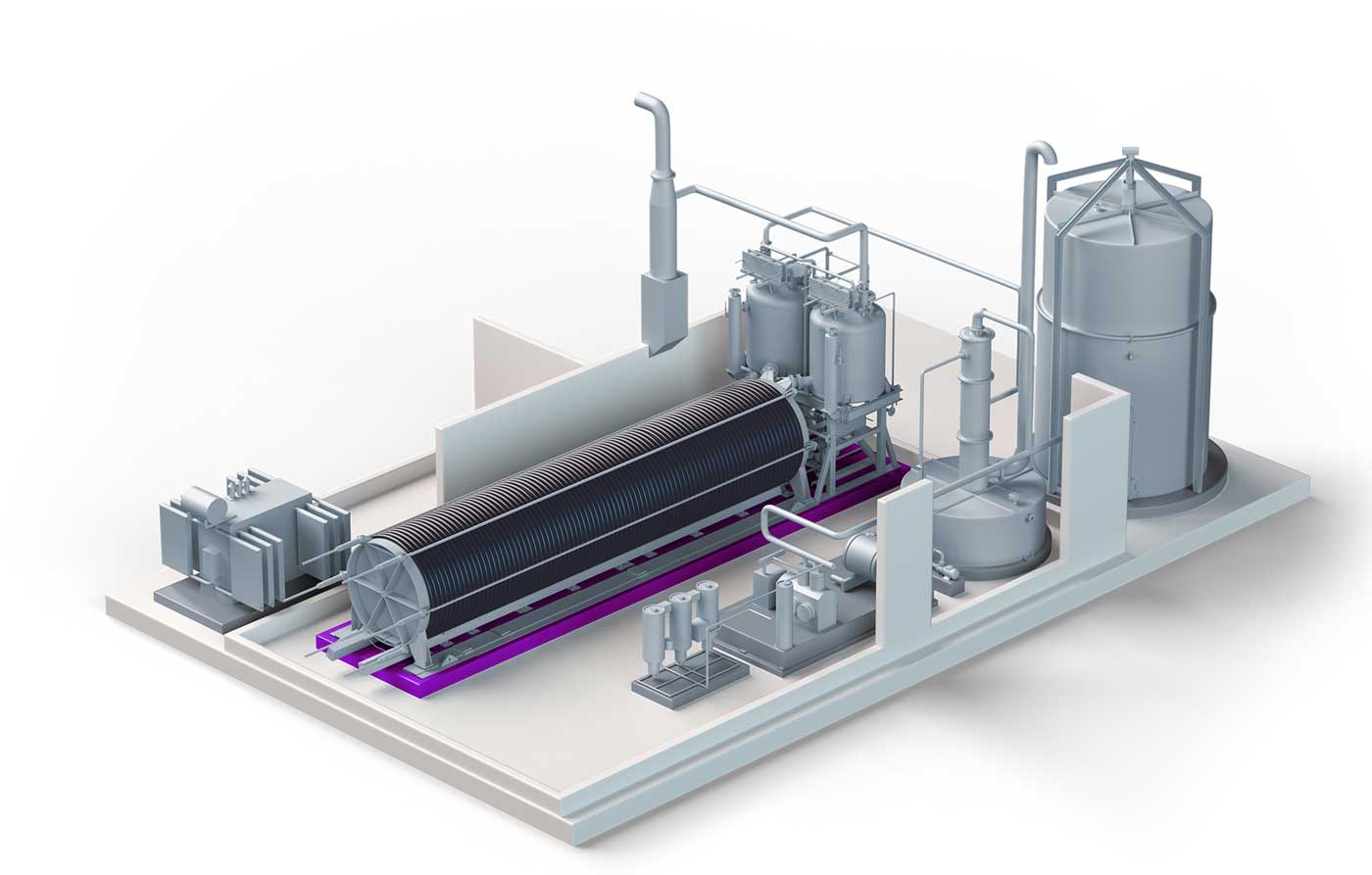Table of Contents
Key takeaways
- Hydrogen as an energy source: Hydrogen, the lightest element, is a clean energy source that can play a crucial role in decarbonizing various sectors.
- Different types of hydrogen: Hydrogen comes in three categories: gray, blue, and green, depending on its production source, with green hydrogen being the most sustainable solution for reducing CO2 emissions.
- Challenges and future prospects: Despite technical and economic challenges, hydrogen has a promising future due to investments in research, the development of standards, and government policy support to catalyze the transition toward a clean and sustainable energy future.
In the face of the climate emergency and the unprecedented challenges posed by climate change, it is imperative to rethink our energy systems and seek sustainable solutions to reduce our carbon footprint. Decarbonizing the energy sector is an absolute necessity if we are to meet global climate targets and secure a cleaner, greener future. In this context, hydrogen is emerging as a key player and a promising potential energy source, capable of playing a crucial role in the energy transition.
With its unique properties and versatility, hydrogen has the potential to revolutionize the energy industry, offering a clean alternative to fossil fuels and helping to reduce greenhouse gas emissions. Its popularity continues to grow, and more and more countries and companies are investing in the research and development of hydrogen technologies.
This article aims to explore in depth the role of hydrogen in decarbonization and the transition to a clean energy future. We’ll look at its different forms, its production process, and examine the advantages it can offer in terms of reducing CO2 emissions and integrating renewable energies. In addition, we’ll discuss the technical and economic challenges associated with its use, and take a look at the future prospects for hydrogen as a pillar of sustainable energy. By highlighting the issues, opportunities and challenges associated with hydrogen, we aim to inform, raise awareness and inspire action to accelerate the decarbonization process and embrace the possibilities offered by hydrogen for a cleaner, more sustainable energy future.
Understanding hydrogen as an energy source
What is hydrogen and how is it produced?
Hydrogen, the lightest and most abundant element in the universe, is in gaseous form at ambient temperature and pressure. It’s colorless, odorless and tasteless, but when burned or converted into electricity, it becomes a clean source of energy, leaving behind only water vapor.
Hydrogen can be produced in a variety of ways. One of the most common methods is electrolysis, which involves separating water into oxygen and hydrogen using an electric current. If this electricity comes from renewable sources, the hydrogen produced is considered “green” and extremely sustainable. Another method is methane reforming, where hydrogen is extracted from natural gas. However, this method releases carbon dioxide into the atmosphere, making the hydrogen produced less environmentally friendly.
Different types of hydrogen
Hydrogen is often classified into three categories, depending on how it is produced. Grey” hydrogen is produced from fossil fuels, and its production emits greenhouse gases. Blue” hydrogen also comes from fossil sources, but the emissions are captured and stored, reducing their impact on the environment. Finally, “green” hydrogen is produced from renewable sources, with no greenhouse gas emissions. It represents the most sustainable form of hydrogen and is at the heart of efforts to decarbonize the economy.
Green hydrogen is seen as a key solution for a clean energy future. Although it is currently more expensive to produce than other forms of hydrogen, costs are falling and should continue to do so as technologies improve and large-scale production becomes more viable. Green hydrogen offers significant potential for reducing greenhouse gas emissions, particularly in hard-to-decarbonize sectors such as heavy transport, industry and heating.
By exploring the various production methods and types of hydrogen, this article aims to provide a clear understanding of hydrogen as an energy source and its potential role in a sustainable energy future. With a particular focus on green hydrogen, we highlight the environmental benefits it offers, while recognizing the economic and technical challenges that still need to be overcome. Through this in-depth review, we aim to demonstrate why hydrogen is an essential player in the transition to a clean, low-carbon energy future.
Hydrogen's advantages in decarbonation
Reducing greenhouse gas emissions
Hydrogen is at the heart of decarbonization strategies, offering a versatile and effective solution for reducing greenhouse gas emissions in many sectors. Its use in transport, for example, is promising, especially for heavy vehicles such as buses, trucks and trains, where electric alternatives are limited. Hydrogen fuel cells convert hydrogen into electricity, propelling the vehicle with no emissions other than water vapor.
In industry, hydrogen can replace fossil fuels to generate heat, particularly in high-temperature processes where electrical alternatives are not viable. It is also used as a raw material in key sectors such as ammonia production and metal refining.
The heating sector, which accounts for a significant share of global emissions, can also benefit from hydrogen. Hydrogen boilers and fuel cell heating systems offer a clean alternative to fossil fuels for heating buildings. Pilot projects in Europe and Asia are exploring the integration of hydrogen into natural gas networks, enabling a smooth transition to cleaner energy.
Integrating renewable energies
Hydrogen plays a key role in integrating renewable energies into the energy system. Thanks to its ability to be stored and transported, hydrogen can act as an energy reservoir, capturing excess energy produced by renewable sources such as solar and wind power. When renewable energy production exceeds demand, excess energy can be used to produce hydrogen by electrolysis. The hydrogen thus produced can be stored and used at a later date, either to generate electricity, or as an energy source for transport or industry.
Numerous projects and initiatives around the world are seeking to integrate hydrogen into energy networks. In Europe, the HyBalance project uses electricity generated by wind power to produce hydrogen, which is then injected into the natural gas grid. In Japan, the city of Fukushima aims to become a hydrogen innovation center, with plans to use local renewable energy to produce hydrogen, which will then be used to power fuel cell vehicles and industrial plants.
By promoting the use of hydrogen, these initiatives contribute not only to reducing greenhouse gas emissions, but also to creating a more resilient and flexible energy system. Hydrogen acts as an essential link between different energy sources, sectors and regions, facilitating a smooth transition to clean, sustainable energy.
Hydrogen has a crucial role to play in global decarbonization efforts. Whether by directly reducing greenhouse gas emissions in transport, industry and heating, or by facilitating the integration of renewable energies into the energy system, hydrogen offers a promising route to a clean, sustainable energy future.
Challenges and prospects
Technical and economic challenges
Although hydrogen offers many advantages as a clean energy carrier, a number of technical and economic challenges need to be overcome to realize its full potential. One of the main technical challenges is hydrogen storage. Because of its low volumetric energy density, hydrogen has to be stored at high pressure or very low temperature, which can be costly and energy-intensive. What’s more, the materials used for hydrogen storage must be resistant to hydrogen to prevent it escaping, which can prove a challenge given the small size of hydrogen molecules.
Transporting hydrogen also poses challenges. Existing transport infrastructures, such as pipelines and tankers, are not adapted to hydrogen transport, requiring significant investment to develop new infrastructures or adapt existing ones. In addition, transporting hydrogen over long distances can lead to energy losses, making the process less efficient.
In terms of economic challenges, the cost of producing hydrogen is a key factor. Currently, grey hydrogen, produced from fossil sources, is cheaper to produce than green hydrogen, produced from renewable sources. To make green hydrogen competitive, it is essential to reduce production costs, which can be achieved through technological advances and an increase in production scale.
What’s more, the development of the hydrogen industry requires substantial capital investment, both for the construction of production, storage and transport infrastructures, and for research and development. Governments and the private sector have a crucial role to play in providing the necessary funding and creating an environment conducive to hydrogen investment.
Towards a hydrogen future
Despite these challenges, the future of hydrogen as the cornerstone of a low-carbon energy system is promising. Many countries around the world have recognized the potential of hydrogen and have put in place initiatives and policies to support its development. For example, the European Union has launched the European Hydrogen Strategy, which aims to accelerate investment in hydrogen and promote its use in various sectors.
To realize hydrogen’s full potential, it is essential to continue investing in research and development, in order to improve hydrogen production, storage and transport technologies. It is also crucial to create regulatory frameworks and standards that facilitate large-scale hydrogen deployment.
The call to action is clear: supporting the transition to hydrogen is essential if we are to achieve our decarbonization targets and combat climate change. By overcoming the technical and economic challenges, and harnessing the benefits of hydrogen, we can pave the way for a clean, sustainable energy future, where hydrogen plays a central role in our energy system.




